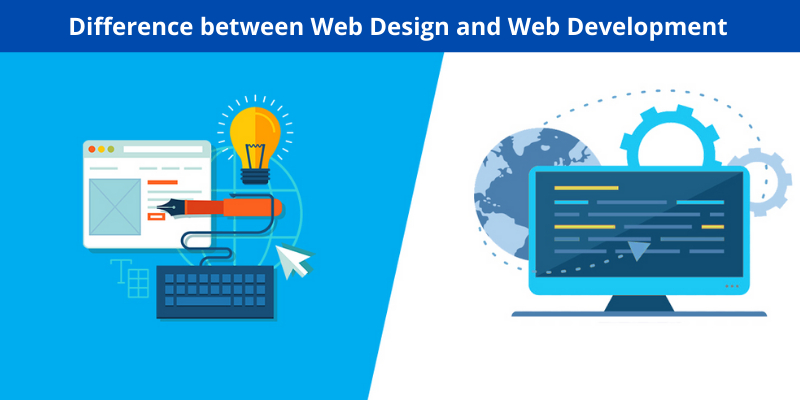Even though they are distinct professions in and of themselves, web design and web development are merging and overlapping in some aspects, making the line between them somewhat blurry.
This is primarily due to cross-learning! A developer cannot afford to ignore what a designer does in today’s highly competitive industry. Through on-the-job knowledge sharing, they happen to learn a little bit about each other’s jobs.
Web Developer Dubai will elaborate in this blog on all your need to know!
They may gain a general understanding of each other’s roles as a result. However, because one is logical and creative, one must have a natural talent to become proficient in the other field. Two opposites! Role reversals, on the other hand, can cause the entire web-building process to go wrong if one side wins.
However, they are used together!
Most of the time, a list of tasks that go into building a website is called “web development.” Web design is included in this as well.
However, They Are Fundamentally Two Distinct Functions.
Google uses the terms “web design” and “development” almost interchangeably. This is not because these terms mean the same thing. Because the majority of people who search for queries using these terms have the same goal. Web design services that also include web development are sometimes referred to as “web designer” services.
The Difference Between Web Design And Web Development
The functions of web design are focused on making users’ experiences and interfaces better. Web development, on the other hand, involves programming and server-side functions that make a website work.
Web design is an artistic process that includes choosing visuals, colors, and fonts, setting up pages, and designing interfaces.
Web designers use software like Adobe Photoshop, Indesign, Illustrator, Sketch, and others to make the website look good.
Web development is a technical function that includes server-side programming, database management, etc. Designers will be specialized in HTML, CSS, and JavaScript. They realize the client’s dream.
They use IDEs or text editors, local servers, multiple browsers, FTP, and other developer-specific programs to make the web interactive.
The developers will be proficient in all or any of the following programming languages: PHP and.NET Python, Ruby, and other languages, they bring the vision of the web designer to life. The steps that lead up to the creation of a website are as follows: briefing, wireframe, web design, web development, and testing. The client’s briefing starts it all.
A wireframe* of the website is created after the requirement is listened to by the web designer.
After getting their approval, they make the website’s page designs. A web developer takes those designs and turns them into a working website.
The output is then put through testing to find and fix bugs or flaws.
*A wireframe is a straightforward graphical representation of the user interface that provides direction for website layout design.
What Exactly Do Web Designers Do?
A wireframe* of the website is drawn by the web designer under the requirements to begin the building process.
He finalizes the UI and UX of the website and ensures that it meets the client’s requirements. He is in charge of selecting the appropriate typography, color schemes, and layout for the website. He assists the developer in better understanding the design and requirements.
What Do Web Developers Do?
After the design has been created, a developer begins their work.
He builds the website’s internal structure and makes it work. He also helps transfer data between the browser and the server. He works on the back end of websites and other web applications. He collaborates with web designers to make the website work. He writes code that can be tested and works well.
He should be good at database management systems like MySQL, Oracle, and others. He is in charge of a website’s framework, server-side functions, business logic, and API integration.
In conclusion,
The process of building a website is both an art and a science. They require different skill sets, but they work well together.
However, hybrid web professionals are on the rise, earning the title “full-stack developer” by stepping outside of their comfort zone to learn all aspects of web development. However, there are times when it requires a high level of creativity or programming expertise that they fail.
Because of this, web development companies typically employ a web development team for site enhancement services and a web design team for providing design-related services.







